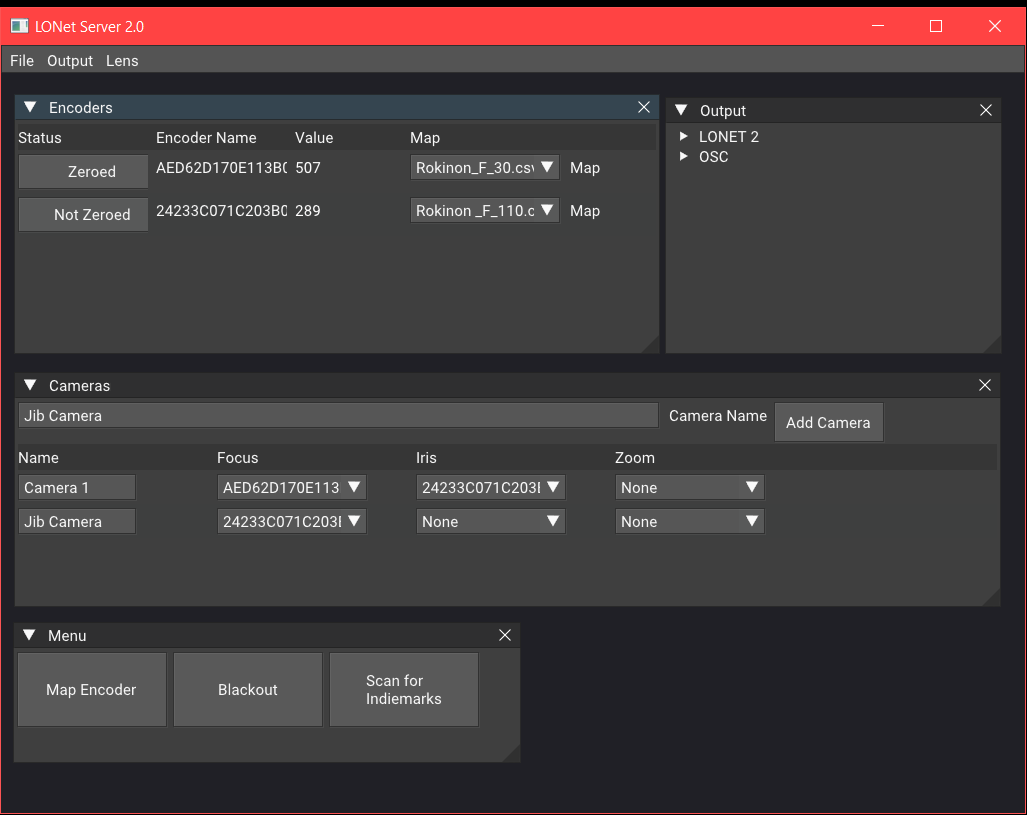LONET Server
LONET Server
The latest version of LONET can be found here.
LONET 2 server is the management system for LOLED lens encoding hardware. It handles configuration, calibration, and data output.
The server does not need to be the same physical machine that the rendering engine, such as Unreal, is running on. However, that is the simplest configuration.
LONET does not require internet access.

LONET 2 supports an unlimited number of cameras, each with their own Focus, Iris, and Zoom encoders.
Assigning Hardware
Upon startup, Indiemark and Glassmark II encoders will automatically populate. If an Indiemark is plugged in after startup, you can press "Detect Indiemark Encoders" to read them.
Cameras
You can add a camera in the camera panel. Each camera will show up as a separate data source in the render engine, and encoders can be chosen for Focus, Iris, and Zoom. Camera names can be changed at any time, or deleted by right clicking and pressing "Delete."
Assigning Lens Maps
If not using a distortion profiling system in your render system (Unreal/Aximmetry etc.) then you can create a basic lens map right in LONET. The process is covered in another page, but when the map is made, you will be able to select it from the dropdown next to the encoder.
Performance Tips
Some routers, like TP-LINK, have anti-DDOS attack features that limit the amount of packets per second that it processes. Turning these features off will ensure you are getting maximum performance from the system.
Some virtualization systems, like Docker, add virtual network adapters that can "eat" the network traffic that's being output. Disable these adapters if you are having network problems.